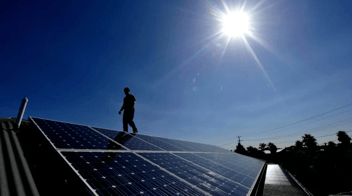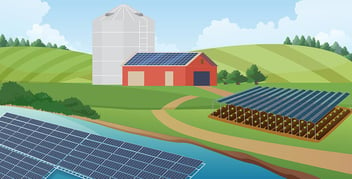Buying a house that already has solar? What should you check?
Some previous homeowners will have left you a purchase receipt, and the details should be on here. Size is measured in kW. If not, you’ll notice you have an inverter on the wall somewhere, and panels on the roof. Count the panels. Systems installed in recent years will be around 300W per panel. Systems installed a long time ago, like ten years, will be around 200W per panel.
How much energy does it produce?
This one can be tricky. By knowing the above, we can usually give a rough answer for you. In very rough terms, take the number above and multiply by 3.5 in Melbourne and up to 4.5 in QLD. This will give you the kWh per day that the system is supposed to produce.
Is it working?
Most old solar power systems either a) continue to function as intended, as per above or 2) don’t work at all or 3) half work, if they are designed as a 2 string system. This should be evident on a sunny day, at noon, relative to the kW number above. Some inverters track a total energy figure, and you can do some basic maths to see how the system has been performing, but you need to know when the system was installed.
Find out more on our blog here: https://blog.skygreen.com.au/has-my-solar-system-been-working-properly
What happens if the panels don't work?
It’s rare that all the panels are broken. It’s common that the inverter is broken. Unfortunately, an old broken inverter can likely not be fixed or replaced, due to migrating technical regulations. However, some systems that aren’t working are just inadvertently switched off, either in the meter box, or with the switch near the inverter, or up on the roof. We recommend checking this. You might also get an indication from lights on the inverter. Inverters usually have a screen, which may also tell you what is happening.
If the system is truly dead, it usually requires full decommissioning, removal and disposable.
Make sure to have the equipment responsibly recycled. SkyGreen can assist you with this.
What about warranties?
Good question. Some panels will have been sold with a long warranty. You will have to contact the manufacturer or the installer about this. Be forewarned that this might not be an easy process if the system was in the cheap category.
General system check?
If the system looks good to keep, consider having it checked for safety and compliance. This is a requirement for all power distributors across Australia, as it is the owner's responsibility to keep the system safe and operable.
SkyGreen offers a Health Check service, this is a detailed and practical approach to checking and testing your solar and battery system before you commit. Here are just some of the ways a SkyGreen Solar Health Check can help:
- Electrical and system performance check
- Inspect panels for defects and any earthing issues
- Inspect and check inverter reading
- Fault identification
- Mounting structure assessment
- System safety check
- Inspect for perished roof penetrations to prevent roof leaks
- Check for recalled electrical products
Our SkyGreen Solar Health check can ensure your system is working efficiently and diagnose any issues that would affect its performance, safety and product warranty.
What about adding to the system?
Despite initial claims, most systems cannot easily have panels added to them, unless specifically planned for. However, you can add a completely new system alongside the existing one, subject to power company guidelines. A very typical example would be that an existing older system is 2.2kW with a 2kW inverter installed. The power company is only concerned with the inverter rating of 2kW. They will likely allow a total 5kW connection to the grid, therefore you can add a 3kW inverter, and a suitable amount of panels to this. You would end up with perhaps a new 3.5kW system, making a total 5.7kW system on your home, which is a decent result. The two systems will run harmoniously side by side.
.png?width=1514&height=370&name=SkyGreen_Logo%20(2).png)


